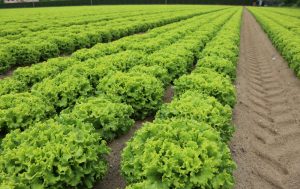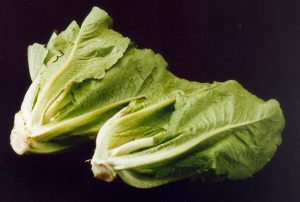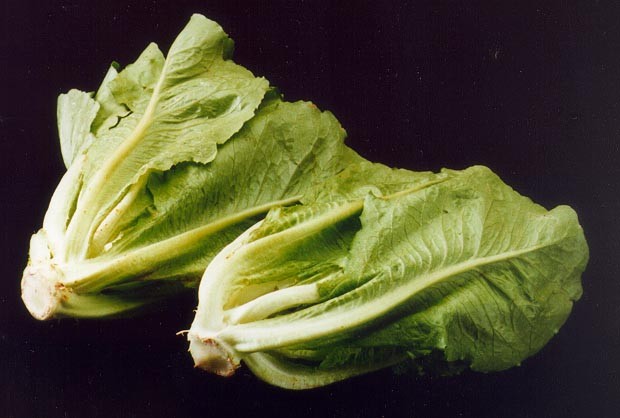Update on E. coli outbreak (Dec. 14):
According to a release from the Food and Drug Administration (FDA), the E. coli outbreak has been traced back to a single farm’s irrigation reservoir. The farm is located in Santa Barbara County, California.
According to the FDA release, the farm has not shipped lettuce since Nov. 20 and is being cooperative with officials during the investigation.
However, the FDA also stated that the investigation will continue until officials can confirm the outbreak originated from this single source.
As of right now, the FDA says there is no reason that consumers and retailers should avoid romaine as long as it meets one of the following conditions:
- The romaine was harvested after Nov. 23
- The romaine was grown hydroponically
- The romaine was grown in a greenhouse
Update on E. coli outbreak (Nov. 30):
The U.S. Food and Drug Administration (FDA) has narrowed its search for the source of the E. coli outbreak to six California counties: Monterey, San Benito, San Luis Obispo, Santa Barbara, Santa Cruz and Ventura. However, the FDA has warned that more counties may be added to that list as the investigation continues.
As of right now, romaine grown outside of these California regions is safe to consume. Consumers are advised to check the packaging on romaine for a harvest date and location before they buy it and eat it .
Update on E. coli outbreak (Nov. 27):
 Florida-grown romaine lettuce has been cleared as safe to eat according to a release from the Florida Department of Agriculture and Consumer Services (FDACS) sent out earlier this morning. The clearing came from the U.S. Food and Drug Administration (FDA) and the Center for Disease Control (CDC) after concluding the outbreak came from a region in California. The FDACS release states:
Florida-grown romaine lettuce has been cleared as safe to eat according to a release from the Florida Department of Agriculture and Consumer Services (FDACS) sent out earlier this morning. The clearing came from the U.S. Food and Drug Administration (FDA) and the Center for Disease Control (CDC) after concluding the outbreak came from a region in California. The FDACS release states:
“Americans deserve a safe, nutritious and abundant food supply, and I’m alarmed to hear that dozens of people have been sickened with this foodborne illness,” said Commissioner Adam H. Putnam. “While the federal investigation is ongoing, I’m encouraged that Florida-grown romaine lettuce is not linked to the outbreak and has been cleared to re-enter the marketplace.”
On Nov. 21, Commissioner Putnam spoke directly with FDA Commissioner Scott Gottleib and advocated for the reintroduction of Florida romaine into the market, given the timing of Florida’s harvest and the advanced production methods used in Florida, and followed up with a letter.
The FDA/CDC announcement advising consumers not to purchase or eat romaine came as a surprise to many growers throughout the United States. In fact, some growers in Florida were angered by the blanket announcement to stop consuming lettuce even though Florida lettuce was never a risk to consume. Read those accounts and listen to full interviews here.
Since the FDA investigation is still ongoing, it is crucial that consumers know where their romaine lettuce is coming from. The FDA is advising consumers to check the packaging for a growing location. If the package does not have a location, the consumer should not eat it. The FDA released the following account regarding clear labeling on packaging:
Based on discussions with major producers and distributors, romaine lettuce entering the market will now be labeled with a harvest location and a harvest date. Romaine lettuce entering the market can also be labeled as being hydroponically or greenhouse grown. If it does not have this information, you should not eat or use it.
If consumers, retailers, and food service facilities are unable to identify that romaine lettuce products are not affected – which means determining that the products were grown outside the California regions that appear to be implicated in the current outbreak investigation — FDA urges that these products not be purchased, or if purchased, be discarded or returned to the place of purchase.
- Clearly and prominently label all individually packaged romaine products to identify growing region and harvest date for romaine; and
- Clearly and prominently label at the point of sale the growing region when it is not possible for romaine lettuce suppliers to label the package (e.g. individual unwrapped whole heads of romaine lettuce available in retail stores).
Original (Nov. 26):
 Many consumers and growers have seen the news about the recent E. coli outbreak. The U.S. Food and Drug Administration (FDA) and the Centers for Disease Control and Prevention (CDC) sent out a warning last week advising consumers to avoid romaine lettuce at all costs. At the time, there was no telling where the tainted lettuce originated. Now it seems that an area in California is to blame.
Many consumers and growers have seen the news about the recent E. coli outbreak. The U.S. Food and Drug Administration (FDA) and the Centers for Disease Control and Prevention (CDC) sent out a warning last week advising consumers to avoid romaine lettuce at all costs. At the time, there was no telling where the tainted lettuce originated. Now it seems that an area in California is to blame.
It did not take long to trace the source back to California, given that California-grown lettuce was dominating the shelves in grocery stores across the country. In fact, states like Florida hadn’t even harvested their product until well after the most recent E. coli report. However, the CDC and FDA warnings that were sent out were very broad, telling consumers they were not to trust lettuce from any source.
AgNet Media caught up with Florida agricultural professionals on this issue. They explained their frustration with the FDA and CDC announcements, which will impact Florida growers even though they are not at fault for the outbreak. Read that story and listen to the full interviews here.
On Thanksgiving Day, FDA Administrator Scot Gottlieb took to Twitter to give an update on the source of the outbreak and clear up the reason behind the FDA’s broad announcement. He writes, “Some lettuce packing is labeled in a way that doesn’t make it clear where the product was grown. If you look at a package of lettuce, it’s most likely going to have the address of the company on the back; not the location of the growing fields. That’s a large part of why we issued such a broad warning. Our ultimate goal is the protection of consumers. And entering into a holiday weekend that’s very food-centric, we felt the need to make this statement. It’s likely that the implicated produce is from California.”
To read Gottlieb’s thread of tweets addressing the outbreak, click here.
This is an unfolding story. The original post was made on Nov. 26. The update was made on Nov. 27. Be sure to check back for more updates as the FDA continues their investigation.
Share this Post










